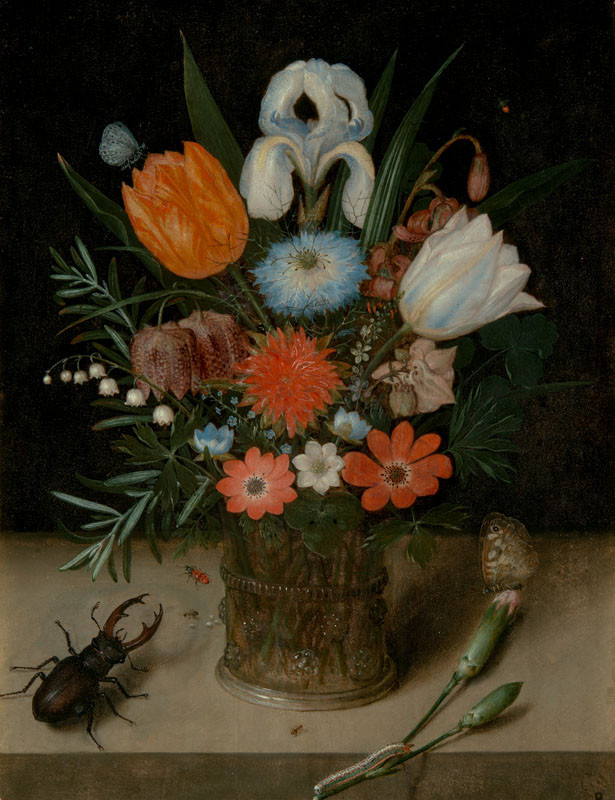
The core of the composition is a glass vase of flowers placed in the centre. The Prague Vase of Flowers by Binoit is the type of the so-called radially arranged vase of flowers. In the early 17th century similarly arranged vase of flowers likewise appeared among the works of Georg Flegel, Jan I Brueghel, Roelandt Savery, Ambrosius Bosschaert. The table on which the vase stands shows several flowers broken off their stems, lying about and symbolising fleetingness. There is also a stag beetle crawling, which symbolises danger to human soul. The choice of the flowers in the vase is based on a tradition, which combines both plants that commonly grew in Central Europe (lily-of-the-valley, forget-me-not, columbine, iris, lily), and rare flowers from the East (nigella, anemone). It was the exclusiveness of the flower arrangement that was appreciated in the first place. At the same time, flowers that did not actually blossom in the same season of the year were combined. As for the painting itself, the brushwork of Peter Binoit is characteristic in its details, distinct outlines, and a clear and compact colour scheme. In this respect, Binoit’s painting comes very close not only to Ambrosius Bosschaert’s works, but also to the production of Ossias Bert. The painting ranks among the early works of Binoit - it can be included in a group of similarly conceived vases of flowers. The earliest known painting of this group is dated two years earlier (1611), Vase of Flowers (Darmstadt, Hessisches Landesmuseum).
